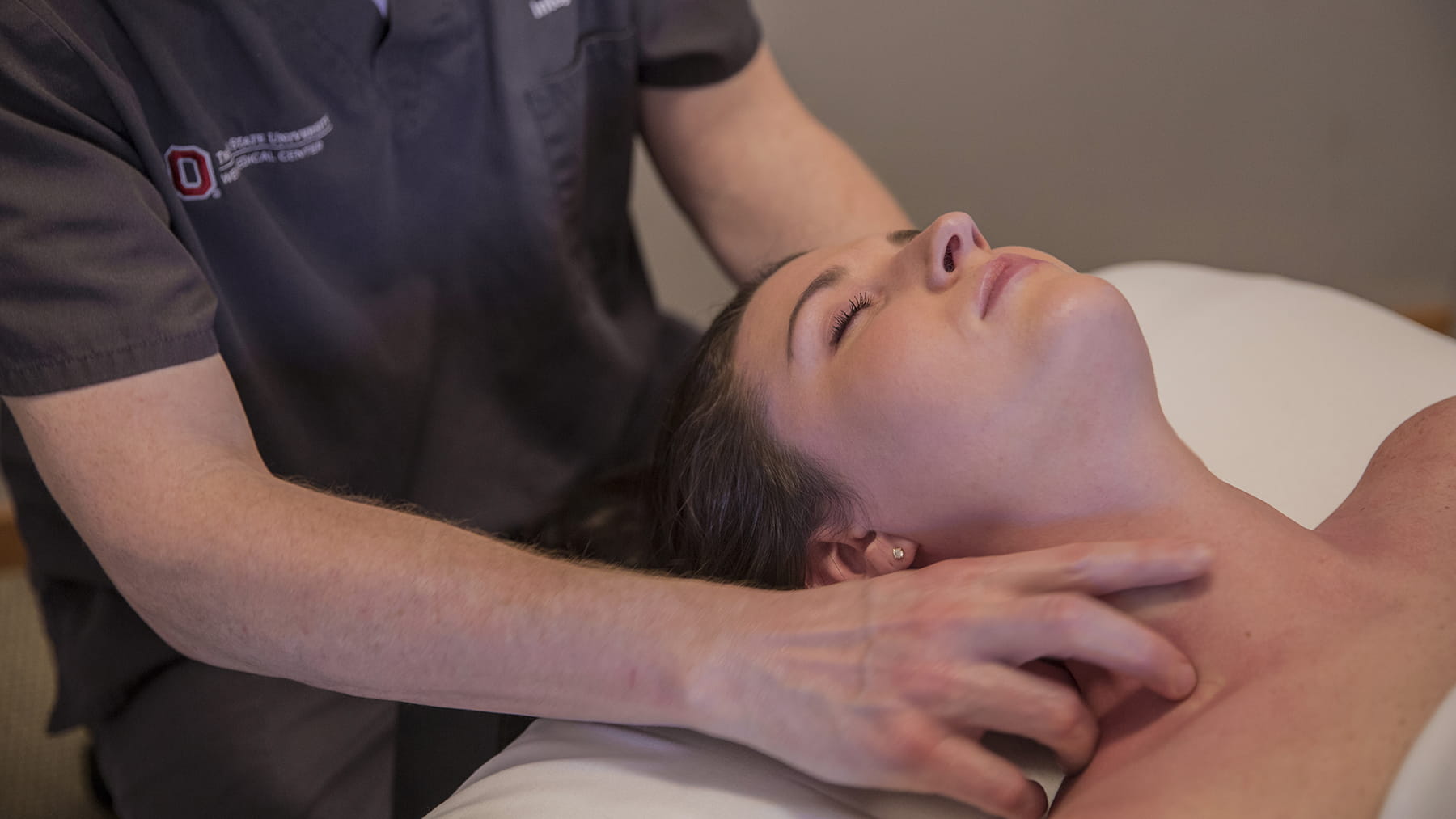

Finance
How Can Insurance Cover Tummy Tuck
Published: November 13, 2023
Looking for financial assistance for your tummy tuck? Find out how insurance can cover the cost of your procedure and help you achieve your desired body transformation.
(Many of the links in this article redirect to a specific reviewed product. Your purchase of these products through affiliate links helps to generate commission for LiveWell, at no extra cost. Learn more)
Table of Contents
- Introduction
- What is a Tummy Tuck?
- Why Would Someone Want a Tummy Tuck?
- The Cost of a Tummy Tuck
- Overview of Health Insurance Coverage
- Factors Insurance Companies Consider
- Pre-authorization and Medical Necessity
- Types of Insurance Coverage for Tummy Tucks
- Medicare and Medicaid Coverage for Tummy Tucks
- Private Insurance Coverage for Tummy Tucks
- Out-of-Pocket Costs for Tummy Tucks
- Tips for Navigating Insurance Coverage
- Conclusion
Introduction
Welcome to our comprehensive guide on how insurance can cover a tummy tuck. In this article, we will delve into the world of tummy tucks, exploring the reasons why someone may want this procedure, the costs involved, and the various types of insurance coverage that may be available.
A tummy tuck, also known as abdominoplasty, is a surgical procedure that involves removing excess skin and fat from the abdomen, as well as tightening the abdominal muscles. This procedure is often sought by individuals who have experienced significant weight loss, pregnancy, or aging, and are left with loose or sagging skin in the abdominal area.
While a tummy tuck can be a life-changing procedure for many individuals, it is important to note that it is typically considered an elective cosmetic surgery. This means that it is not typically covered by health insurance companies, as they generally only provide coverage for medically necessary procedures. However, there are situations where insurance may cover a portion or all of the cost, and we will explore these scenarios in more detail throughout this guide.
Understanding the potential insurance coverage for a tummy tuck can be complex, as each insurance company has its own policies and guidelines. Additionally, factors such as the individual’s overall health, the presence of underlying medical conditions, and the extent of the procedure required can all impact the insurance coverage eligibility.
For individuals considering a tummy tuck, it is important to have a clear understanding of the potential insurance coverage options available to them and the steps that need to be taken to navigate the insurance process. By arming yourself with knowledge and following the tips provided in this guide, you can increase your chances of successfully obtaining insurance coverage for your tummy tuck.
Now that we have set the stage, let’s dive deeper into the world of tummy tucks and explore the reasons why someone may choose to undergo this procedure.
What is a Tummy Tuck?
A tummy tuck, also known as abdominoplasty, is a surgical procedure that involves removing excess skin and fat from the abdomen while also tightening the abdominal muscles. This procedure is commonly sought by individuals who have undergone dramatic weight loss, pregnancy, or have experienced significant changes in their body due to aging.
During a tummy tuck, an incision is made along the lower abdomen, usually below the bikini line, allowing the surgeon to access the underlying tissues. The excess skin and fat are then carefully removed, and the abdominal muscles are tightened and sutured together to create a firmer, flatter abdominal contour.
There are different types of tummy tucks, each catering to specific needs and desired outcomes. A full tummy tuck involves addressing both the upper and lower abdomen, including the removal of excess skin and fat from a larger area. On the other hand, a mini tummy tuck focuses on the lower abdomen, making it suitable for individuals who have less excess tissue in the upper abdomen area.
Tummy tucks are not intended for weight loss purposes or as a substitute for a healthy lifestyle. They are primarily cosmetic procedures that aim to improve the appearance of the abdomen by creating a toned, contoured, and proportionate midsection. Many individuals who opt for a tummy tuck have already made significant efforts to lose weight or achieve a healthier lifestyle, but are left with loose skin or stretched abdominal muscles that cannot be corrected through exercise or diet alone.
It is important to note that a tummy tuck is a major surgical procedure that requires careful consideration and consultation with a board-certified plastic surgeon. The surgeon will assess the individual’s overall health, discuss the goals and expectations of the procedure, and determine whether they are a suitable candidate for the surgery.
Now that we have a better understanding of what a tummy tuck entails, let’s explore the reasons why someone may choose to undergo this transformative procedure.
Why Would Someone Want a Tummy Tuck?
There are several reasons why someone may choose to undergo a tummy tuck. While the primary motivation is often aesthetic, there can be practical and psychological benefits as well. Here are some common reasons why individuals consider this procedure:
1. Excess Skin Removal: After significant weight loss or pregnancy, the skin in the abdominal area may fail to shrink back, leaving behind loose and sagging skin. A tummy tuck can effectively remove this excess skin, providing a smoother and more toned appearance.
2. Muscle Tightening: Pregnancy or weight gain can stretch and weaken the abdominal muscles, resulting in a bulging or protruding abdomen. A tummy tuck can repair and tighten these muscles, creating a flatter and firmer abdominal contour.
3. Improved Body Proportions: Many individuals seek a tummy tuck to achieve a more balanced and proportionate body shape. By removing excess fat and skin from the abdomen, the waistline can become more defined and the overall body silhouette can be enhanced.
4. Boost in Confidence: A tummy tuck can have a significant impact on an individual’s self-esteem and body image. By eliminating the physical discomfort and self-consciousness caused by excess abdominal skin, individuals may experience a newfound confidence and improved quality of life.
5. Health Benefits: In some cases, the excess skin and fat in the abdominal area can cause hygiene issues, skin irritations, and discomfort when performing physical activities. A tummy tuck can alleviate these problems, allowing individuals to engage in a more active and fulfilling lifestyle.
6. Postpartum Restoration: After pregnancy, many women struggle with changes in their abdominal area, such as stretched skin and weakened muscles. A tummy tuck can help restore their pre-pregnancy body and address the physical effects of childbearing.
7. Motivation for Weight Loss: For individuals who have undergone significant weight loss, a tummy tuck can serve as a reward and motivator to maintain their new healthy lifestyle. It can provide a final transformation, helping individuals fully embrace their new bodies and maintain their weight loss results.
It is important to remember that a tummy tuck is a personal decision, and individuals should consult with a qualified plastic surgeon to determine if it is the right option for them. Factors such as overall health, realistic expectations, and desired outcomes should be considered before undergoing this surgical procedure.
Now that we have explored the reasons why someone may want a tummy tuck, let’s shift our focus to the cost associated with this procedure and how insurance coverage plays a role.
The Cost of a Tummy Tuck
Understandably, one of the primary concerns for individuals considering a tummy tuck is the cost. The cost of a tummy tuck can vary significantly based on several factors, including the geographical location, the surgeon’s experience, the extent of the procedure required, and any additional fees for anesthesia, facility usage, and post-operative care.
On average, the cost of a tummy tuck in the United States ranges from $6,000 to $12,000. However, it is important to note that this is a rough estimate and can vary depending on individual circumstances. For example, a mini tummy tuck may be less expensive than a full tummy tuck, as it involves a smaller area of the abdomen.
It is crucial to factor in additional expenses such as pre-operative consultations, medical tests, prescription medications, and post-operative garments or bandages. These costs can add up, so it is important to have a clear understanding of the overall financial implications of the procedure.
Insurance coverage for a tummy tuck is typically limited, as it is considered an elective cosmetic procedure. However, in certain cases where a tummy tuck is deemed medically necessary, insurance coverage may be possible. We will explore the factors insurance companies consider and the types of insurance coverage available for tummy tucks in the following sections.
Before proceeding with a tummy tuck, it is crucial to consult with a qualified plastic surgeon who can provide a detailed breakdown of the costs involved. They can offer guidance on financing options, payment plans, and any potential avenues for insurance coverage.
Now that we have a better understanding of the cost considerations associated with a tummy tuck, let’s delve into the realm of insurance coverage and explore the factors that insurance companies take into account when determining coverage eligibility.
Overview of Health Insurance Coverage
When it comes to health insurance coverage for a tummy tuck, it is essential to understand that most insurance plans categorize this procedure as elective cosmetic surgery. This means that it is typically not covered under standard health insurance policies. However, there are situations where insurance may provide coverage if certain criteria are met.
Health insurance plans are designed to cover medically necessary procedures that are deemed essential for the treatment or prevention of a specific medical condition. Cosmetic procedures, including tummy tucks, are considered elective and are generally not seen as medically necessary.
However, there are instances where a tummy tuck may be considered for insurance coverage. This typically occurs when there is a medical need or functional impairment caused by the excess skin and weakened abdominal muscles. For example, insurance may provide coverage for a tummy tuck if it can be demonstrated that the excess skin is causing chronic pain, discomfort, or skin infections.
Insurance coverage policies and criteria can vary significantly among different insurance companies and individual plans. Some insurance companies may have strict guidelines and require extensive documentation to validate the medical necessity of the procedure, while others may have more lenient coverage policies.
It is crucial to carefully review your specific insurance policy or consult with your insurance provider to understand the coverage options available for a tummy tuck. Your plastic surgeon can also provide guidance and assist in determining the likelihood of insurance coverage based on their experience working with different insurance companies.
In the following sections, we will explore the factors that insurance companies commonly consider when evaluating coverage for a tummy tuck, such as pre-authorization, medical necessity, and the types of coverage available through Medicare, Medicaid, and private insurance plans.
Now that we have an overview of health insurance coverage for a tummy tuck, let’s delve into the factors that insurance companies take into consideration when evaluating coverage eligibility.
Factors Insurance Companies Consider
When determining coverage eligibility for a tummy tuck, insurance companies typically assess several key factors. These factors help insurers evaluate the medical necessity and potential benefits of the procedure. While the criteria can vary among insurance providers, here are some common factors that insurance companies consider:
1. Medical Documentation: Insurance companies often require thorough medical documentation to support the claim for a tummy tuck. This includes medical records, photographs, diagnostic test results, and statements from healthcare professionals detailing the functional impairment or medical need for the procedure.
2. Failure of Non-Surgical Treatments: Insurance may be more likely to provide coverage for a tummy tuck if non-surgical treatments, such as physical therapy or topical creams, have been attempted and failed to provide adequate relief or improvement.
3. Body Mass Index (BMI): Insurance companies may consider an individual’s BMI when evaluating coverage eligibility for a tummy tuck. Some insurers have specific BMI thresholds that must be met, ensuring that the individual is within a healthy weight range and that the procedure is not solely performed for weight loss purposes.
4. Presence of Medical Conditions: If the excess skin and weakened abdominal muscles are causing or exacerbating a specific medical condition, such as chronic pain, skin infections, or mobility issues, insurance companies may be more inclined to provide coverage for a tummy tuck.
5. Functional Impairments: Insurance companies may evaluate the impact of the excess skin and weakened abdominal muscles on an individual’s ability to perform daily activities, such as exercise, work, or maintaining personal hygiene. If functional impairments significantly affect the person’s quality of life, it may strengthen the case for insurance coverage.
6. Psychological or Emotional Distress: In some cases, insurance companies may consider the psychological or emotional distress caused by the appearance of the abdomen. Supporting evidence, such as counseling or therapy records, may be required to demonstrate the impact on mental well-being.
7. Insurance Policy Coverage Criteria: Each insurance policy has its own coverage criteria and guidelines. It is crucial to review the specific policy for any exclusions, limitations, or requirements related to coverage for a tummy tuck.
It is important to note that meeting these factors does not guarantee insurance coverage, as each insurance company’s policy may differ. The final decision regarding coverage eligibility is typically made by the insurance company after a thorough review of the supporting documentation.
In the next sections, we will explore the concepts of pre-authorization and medical necessity, as these play a significant role in the insurance coverage process for a tummy tuck.
Pre-authorization and Medical Necessity
When seeking insurance coverage for a tummy tuck, it is important to understand the concepts of pre-authorization and medical necessity. These terms play a crucial role in the insurance coverage process and help determine if a procedure will be covered.
Pre-authorization is a process where you obtain approval from your insurance company before undergoing a specific procedure. It involves submitting all relevant medical documentation, including a detailed explanation of why the tummy tuck is necessary and how it will benefit your health and well-being.
During the pre-authorization process, insurance companies carefully evaluate the medical necessity of the tummy tuck. Medical necessity refers to the justification for a procedure based on established clinical criteria, demonstrating that it is essential for diagnosis, treatment, or management of a specific medical condition.
To establish medical necessity for a tummy tuck, you may need to provide medical records, photographs, diagnostic test results, statements from healthcare professionals, and any other supporting documentation required by your insurance company. This helps insurance companies evaluate the functional impairment and the impacts on your health and quality of life caused by the excess skin and weakened abdominal muscles.
The process of obtaining pre-authorization and establishing medical necessity can be complex and time-consuming. It requires collaboration between you, your plastic surgeon, and your insurance company. Your plastic surgeon can assist by providing the necessary documentation, submitting the pre-authorization request, and advocating on your behalf.
Keep in mind that pre-authorization does not guarantee insurance coverage. Even if pre-authorization is obtained, the final coverage decision will be based on your insurance company’s policies and coverage criteria.
It is crucial to familiarize yourself with your insurance policy’s pre-authorization requirements and medical necessity criteria specific to a tummy tuck. Understanding these terms and following the necessary processes will increase your chances of obtaining insurance coverage.
In the next sections, we will explore the different types of insurance coverage available for tummy tucks, including Medicare and Medicaid coverage, as well as private insurance coverage options.
Types of Insurance Coverage for Tummy Tucks
While tummy tucks are often considered elective cosmetic procedures, there are some situations where insurance coverage may be available. The types of insurance coverage for tummy tucks can vary depending on the insurance provider and the individual policy. Here are some common types of coverage:
1. Medically Necessary Tummy Tucks: In certain cases where a tummy tuck is deemed medically necessary, insurance may provide coverage. This typically occurs when there is a functional impairment, such as chronic pain, skin infections, or mobility issues caused by the excess skin and weakened abdominal muscles. Meeting the insurance company’s medical necessity criteria is crucial to secure coverage.
2. Post-Bariatric Surgery: Individuals who have undergone significant weight loss through bariatric surgery may be eligible for insurance coverage for a tummy tuck. After massive weight loss, excess skin in the abdominal area is common. Insurance companies may view this excess skin as a medical condition and provide coverage based on the impact it has on the individual’s health and quality of life.
3. Reconstructive Surgery: In cases where a tummy tuck is performed for reconstructive purposes, such as restoring the abdomen after cancer surgery or trauma, insurance coverage may be available. These situations typically involve addressing functional impairments or restoring the body after the removal of tumors or extensive trauma.
4. Medicare and Medicaid Coverage: Medicare, a federal health insurance program primarily for individuals aged 65 and older, may provide coverage for a tummy tuck if it is deemed medically necessary, such as after weight loss surgery. Medicaid, a joint federal and state program that provides healthcare coverage for low-income individuals, may also offer coverage for medically necessary tummy tucks, depending on the specific state guidelines.
It is important to note that each insurance policy has its own coverage criteria and guidelines. They may require pre-authorization, medical documentation, and evidence of medical necessity to assess eligibility for coverage. Understanding your insurance policy and working closely with your plastic surgeon and insurance company is essential in determining the types of coverage available to you.
If insurance coverage is not available or if you do not meet the criteria for coverage, you may need to explore other financing options, such as payment plans or medical financing services, to manage the cost of the tummy tuck out-of-pocket.
In the next section, we will discuss the coverage options and requirements specific to private insurance plans for tummy tucks.
Medicare and Medicaid Coverage for Tummy Tucks
Medicare and Medicaid are government-funded healthcare programs that provide coverage for certain medical procedures, including tummy tucks, under specific circumstances. Let’s explore the coverage options and requirements for tummy tucks under Medicare and Medicaid:
1. Medicare Coverage: Medicare, a federal health insurance program, primarily covers individuals aged 65 and older, as well as individuals with certain disabilities. While Medicare typically does not cover elective cosmetic procedures, there are situations where it may provide coverage for a tummy tuck. Medicare may cover a tummy tuck if it is deemed medically necessary, often after massive weight loss through bariatric surgery. It is essential to meet the specific medical necessity criteria outlined by Medicare to qualify for coverage.
2. Medicaid Coverage: Medicaid is a joint federal and state program that provides healthcare coverage for low-income individuals and families. Medicaid coverage for a tummy tuck varies by state, as each state has its own guidelines and criteria. In some cases, Medicaid may provide coverage for a tummy tuck if it is considered medically necessary. This typically involves demonstrating the functional impairment or medical condition caused by the excess skin or weakened abdominal muscles.
In both Medicare and Medicaid cases, it is important to consult with your plastic surgeon and review the specific coverage guidelines of your state or federal program. Your plastic surgeon can assist in navigating the pre-authorization process and providing the necessary medical documentation to support your request for coverage.
Keep in mind that even if you are eligible for Medicare or Medicaid coverage, there may still be certain out-of-pocket costs associated with the tummy tuck procedure. This could include deductibles, co-pays, or certain components of the surgery that may not be covered.
It is crucial to stay informed about the coverage options and requirements specific to Medicare and Medicaid in your state. Additionally, understanding the limitations and potential out-of-pocket expenses will help you plan and make informed decisions regarding your tummy tuck procedure.
In the next section, we will explore the coverage options and requirements for tummy tucks under private insurance plans.
Private Insurance Coverage for Tummy Tucks
Private insurance coverage for tummy tucks can vary significantly depending on the insurance provider and the individual policy. While most private insurance plans categorize tummy tucks as elective cosmetic procedures, there are situations where coverage may be available. Let’s explore the coverage options and requirements for tummy tucks under private insurance:
1. Medical Necessity: Some private insurance plans may provide coverage for a tummy tuck if it is deemed medically necessary. This typically requires providing evidence of functional impairment, such as chronic pain, skin infections, or mobility issues caused by the excess skin or weakened abdominal muscles. Insurance companies will evaluate the medical documentation and determine whether the procedure meets their medical necessity criteria.
2. Contracted Surgeons: Private insurance plans often have a network of contracted surgeons and providers. If you receive a tummy tuck from an in-network or contracted plastic surgeon, it is more likely that your insurance will provide coverage, or at least partial coverage, for the procedure. Going out-of-network might result in reduced coverage or no coverage at all.
3. Pre-authorization: Prior to undergoing a tummy tuck, it is important to obtain pre-authorization from your insurance company. This involves submitting medical documentation, including medical records, photographs, diagnostic test results, and statements from healthcare professionals, to support the request for coverage. Pre-authorization is crucial in determining your eligibility for insurance coverage.
4. Policy-specific Criteria: Insurance policies can have specific criteria and guidelines for coverage of a tummy tuck. These criteria may include a minimum amount of excess skin or stipulations related to weight loss or body mass index (BMI). Understanding the specific requirements outlined in your insurance policy will help you determine your eligibility for coverage.
It is important to note that even if you meet the criteria for coverage, there may still be certain out-of-pocket costs associated with the tummy tuck procedure, such as deductibles, co-pays, or non-covered components of the surgery. Consulting with your plastic surgeon and contacting your insurance provider directly can help you understand the coverage options available and estimate the potential costs.
Navigating insurance coverage for a tummy tuck can be complex, but with proper documentation and understanding of your insurance policy, you can improve your chances of securing coverage. Your plastic surgeon can provide guidance, assist with the pre-authorization process, and advocate for coverage on your behalf.
In the next section, we will discuss the potential out-of-pocket costs associated with a tummy tuck and provide some tips for navigating the insurance coverage process effectively.
Out-of-Pocket Costs for Tummy Tucks
While insurance coverage for tummy tucks is limited, it is important to understand the potential out-of-pocket costs associated with this procedure. These costs can vary based on several factors, including your insurance coverage, the complexity of the procedure, and any additional fees. Here are some common out-of-pocket expenses to consider:
1. Deductibles: Many insurance plans require individuals to meet a deductible before coverage begins. This is the amount you must pay out of pocket before your insurance starts to cover costs. Depending on your plan, your deductible may apply to the tummy tuck procedure.
2. Co-pays and Co-insurance: Even with insurance coverage, co-pays and co-insurance may apply. Co-pays are fixed amounts you pay for certain services, while co-insurance refers to the percentage of the procedure cost that you are responsible for. These amounts can vary, so it is essential to review your insurance policy to understand your financial responsibility.
3. Non-covered Components: Insurance coverage may exclude certain components of a tummy tuck, such as certain tests, medications, or post-operative supplies. You may need to pay for these costs out of pocket.
4. Out-of-Network Fees: If you choose to have your tummy tuck performed by an out-of-network surgeon, your insurance coverage may be reduced or may not apply at all. In this case, you may need to cover the full cost of the procedure.
5. Consultations and Pre-operative Costs: Pre-operative consultations, medical tests, and other related expenses leading up to the tummy tuck procedure may not be covered by insurance and can contribute to the overall out-of-pocket costs.
When considering a tummy tuck, it is crucial to budget and plan for these potential out-of-pocket expenses. Having a clear understanding of your insurance coverage and discussing the financial aspects with your plastic surgeon will help you prepare for the costs involved.
If insurance coverage is not available or if you cannot afford the out-of-pocket costs, it may be necessary to explore alternative financing options, such as payment plans, medical financing, or personal loans. Your plastic surgeon’s office may have resources or recommendations to assist you in finding appropriate financing options.
In the next section, we will provide tips and suggestions to help you navigate the insurance coverage process for a tummy tuck and maximize your chances of securing coverage.
Tips for Navigating Insurance Coverage
Navigating the insurance coverage process for a tummy tuck can be challenging, but with proper preparation and understanding, you can increase your chances of securing coverage. Here are some tips to help you navigate the insurance coverage process effectively:
1. Review Your Insurance Policy: Familiarize yourself with your insurance policy and understand the coverage options and criteria specific to tummy tucks. Pay attention to any medical necessity requirements, exclusions, or limitations that may impact your coverage eligibility.
2. Consult with Your Plastic Surgeon: Schedule a consultation with a qualified plastic surgeon who can evaluate your specific situation. They can assist in determining if a tummy tuck is medically necessary and guide you through the insurance coverage process.
3. Gather Relevant Medical Documentation: Gather all relevant medical documentation, including medical records, photographs, diagnostic test results, and statements from healthcare professionals. This documentation will support your claim for coverage and provide evidence of the functional impairment or medical necessity of the tummy tuck.
4. Seek Pre-authorization: Obtain pre-authorization from your insurance company before undergoing a tummy tuck. This involves submitting the necessary medical documentation and requesting approval for coverage. Pre-authorization increases the likelihood of securing insurance coverage.
5. Follow Insurance Company Guidelines: Familiarize yourself with the specific guidelines and requirements of your insurance company. Adhere to their procedures, provide requested information promptly, and ensure that all necessary paperwork is completed accurately.
6. Document Functional Impairments: Clearly document any functional impairments caused by the excess skin or weakened abdominal muscles. Keep track of any pain, discomfort, or limitations in daily activities. This documentation will support your claim for medical necessity.
7. Stay Persistent and Advocate for Yourself: Be prepared for potential denials or requests for additional information. Stay persistent and be prepared to advocate for yourself. If your claim is denied, consider filing an appeal and provide any additional supporting documentation as needed.
8. Explore Payment Options: If insurance coverage is not available or if you have high out-of-pocket costs, explore alternative payment options. Discuss flexible payment plans or medical financing services with your plastic surgeon’s office to help manage the financial aspects of the procedure.
By following these tips and being proactive in your approach, you can navigate the insurance coverage process more effectively and increase your chances of securing coverage for your tummy tuck.
In the concluding section, we will summarize the key points discussed in this article and emphasize the importance of understanding insurance coverage for tummy tucks.
Conclusion
Understanding insurance coverage for a tummy tuck is crucial when considering this transformative procedure. While tummy tucks are typically classified as elective cosmetic surgeries, there are instances where insurance coverage may be available. By navigating the insurance coverage process effectively, you can potentially offset the cost of the procedure.
It is important to remember that insurance coverage for a tummy tuck is contingent on meeting specific criteria, such as demonstrating medical necessity or functional impairment caused by the excess skin or weakened abdominal muscles. Each insurance company and policy differs in their coverage guidelines and requirements, so it is essential to review your insurance policy and consult with your plastic surgeon for guidance.
Key factors to consider include pre-authorization, medical necessity, and the types of coverage available through Medicare, Medicaid, and private insurance plans. While coverage for tummy tucks may still be limited, exploring the potential eligibility for coverage can provide opportunities to secure insurance benefits.
If insurance coverage is not available or if you have high out-of-pocket expenses, there are alternative payment options to consider, such as payment plans or medical financing services.
Remember to be proactive, gather the necessary medical documentation, and advocate for yourself throughout the process. Stay persistent and follow up with your insurance company, providing any additional information they may require.
Ultimately, it is important to have realistic expectations and be prepared for potential out-of-pocket costs associated with a tummy tuck. Consulting with a qualified plastic surgeon will help you understand the financial aspects and guide you through the decision-making process.
By educating yourself, understanding your insurance policy, and working closely with your healthcare providers, you can navigate the insurance coverage process for a tummy tuck more effectively and make informed decisions about your healthcare journey.














